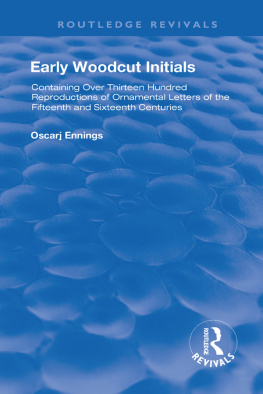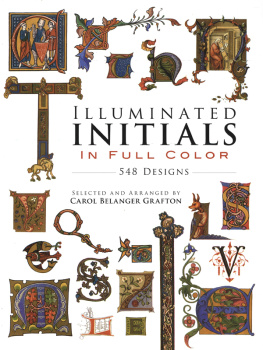First published in 1908 by Methuen & Co.
This edition first published in 2019 by Routledge
2 Park Square, Milton Park, Abingdon, Oxon, OX14 4RN
and by Routledge
52 Vanderbilt Avenue, New York, NY 10017
Routledge is an imprint of the Taylor & Francis Group, an informa business
1908 by Taylor & Francis
All rights reserved. No part of this book may be reprinted or reproduced or utilised in any form or by any electronic, mechanical, or other means, now known or hereafter invented, including photocopying and recording, or in any information storage or retrieval system, without permission in writing from the publishers.
Publishers Note
The publisher has gone to great lengths to ensure the quality of this book but regrets to inform the customer that previously available online resources are no longer available with this title.
Disclaimer
The publisher has made every effort to trace copyright holders and welcomes correspondence from those they have been unable to contact.
A Library of Congress record exists under ISBN:
ISBN 13: 978-1-138-31816-8 (hbk)
ISBN 13: 978-0-429-45476-9 (ebk)
F ROM the number of works that have been published within the last few decades on early printing and the decoration of early books, it is evident that an increasing interest is taken in these subjects, not only by those whose studies have specially fitted them to appreciate such researches, but also the educated public.
There is, however, one variety of engraving that has hitherto attracted but little attention, and the importance of which, both from artistic and documentary points of view, is still unrecognised, and it may even be said unsuspected by the great majority of students. Whilst every engraving that may technically be termed a cut or an illustration is catalogued and recorded in the different monographs on special printers, those which take the form of initial letters, often of equal, if not superior merit, are represented much more sparsely, and as having a secondary importance only.
In a monograph on fifteenth-century printing in a certain German town, for instance, the writer, a professional bibliographer, gives about ten or twelve initial letters, whereas the extent of the material upon, which he might have drawn may be judged from the fact that a more recent authority, in his history of one printer only of this town, has been able to reproduce more than fifty specimens, many of which are quite equal in interest to illustrations proper, some of them having been recently pointed out by a London expert as constituting the chief attraction of a volume 1 with both initials and illustrations which came under his hammer.
The above lines, written ten years ago, when I first began to collect material for this volume, are perhaps no longer as true absolutely as when first penned. Besides the works of Butsch, Reiber, and Heitz which were already in existence, Onganias book on Venice bibliography contains a great many initials; Heitz has devoted a volume to those of Holbein and other artists of the school of Basle, and others to certain initials of Strasburg and Hagenau; and Redgrave, Haebler, Claudin, Schorbach, Spirgatis, and Kristeller give a certain prominence to initials in their respective
I still think, however, that a special work on the subject is needed to do justice to the richness of artistic material available in this special matter.
The woodcuts in early books are often merely illustrative, that is to say explanatory of the text, and were not designed as ornaments; but the initials were intended to be decorative, and one can see in them a real artistic effort and sentiment.
Quaritch, indeed, has recently called attention to this fact, of the superiority in some early books of the initials over the woodcuts, and it is beginning to be recognised also by several great booksellers, whose catalogues contain increasing numbers of reproductions of ornamental letters in preference to other specimens of early engraving.
Unfortunately, circumstances have prevented my completing my first programme, and what I offer here can only be considered as a general introduction to the subject. But such as they are, these fragmentary notes will not, I hope, be found entirely devoid of interest.
In conclusion, I have to express my thanks to Mr. A. W. Pollard, the amiable and indefatigable secretary of the Bibliographical Society, for help in seeing this volume through the press, and for many valuable suggestions and criticisms.
OSCAR JENNINGS.
The initials in the Leben der Heiligen Drei Knige of Knoblochtzer.
T HE ornamentation of books dates probably from the time of their invention, that is to say, it goes back to a very remote antiquity. From Greece, where the book-trade was flourishing at an early period, it passed into Italy, extending thence to the provinces of the Empire, to Gaul and Spain, where book-lovers became more and more numerous, and as civilisation became more refined, increasingly particular about bindings and ornamentation.
The verse of Tibullus,
Indicet ut nomen littera picta tuum.
shows the extent of the embellishments to which bibliophiles had then become accustomed, requiring the titles of their favourite authors to be engrossed in coloured or illuminated letters.1
Besides the title, the headings of chapters and the initial letters were also distinguished in the same way from the rest of the work, a custom which passed from the Roman copyists to those of the Lower Empire, and in course of time became generally adopted in the preparation of manuscripts. But this was not all. It is now recognised that book illustration was known to the Romans, and that the miniatures of the medieval manuscripts only followed the fashion of the rich and sumptuous volumes transcribed by the copyists of Athens and Rome. The fourth-century Virgil, for instance, one of the treasures of the Vatican, which has been so well described by M. Pierre de Nolhac, is an example of this, containing as it does a large number of figures. Like all manuscripts of the time, it was written exclusively in majuscules, very similar to those used in Roman inscriptions.1
The taste for luxury spreading from the third century, Byzantium became the centre of the most extravagant and costly elegance in all its manifestations, and books of that origin have come down to us written on purple parchment in letters of gold. It was not until several centuries later that a reaction took place, when Leo the Isaurian, in 741, considering such refinement as sinful, put an end to it by burning the public library, together with its staff of













